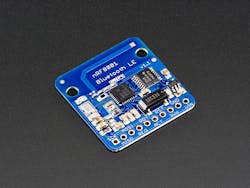Next-Gen Asset Tracking Technology Could Replace RFID in Coming Years
As large enterprises seek to deploy next-generation asset tracking technologies to improve operational efficiencies, the market will hit $4.5 billion by 2022, according to ABI Research.
The global growth rate for worldwide indoor positioning market for next-generation asset tracking will have a CAGR of 32%.
As the hugely fragmented market develops, the location supply chain will become very complex with the boundaries between the different nodes blurring.
Next-generation asset tracking solutions based on Bluetooth Low Energy (BLE) and Ultra-wideband (UWB) will rapidly replace expensive legacy systems such as passive Radio Frequency Identification (RFID) while providing increased location granularity.
“Although Bluetooth is quickly becoming the go-to standard for indoor asset tracking use cases, the choice of Real-Time Location System (RTLS) technology is dependent on many factors including the number of assets being tracked, the coverage area required, the level of accuracy required for each use case, and the overall cost of the solution including both infrastructure and implementation costs,” says Samuel McLaughlin, research analyst at ABI Research.
“Many smaller companies simply cannot afford the costs associated with RFID systems,” McLaughlin adds. “A ruggedized BLE tag will cost US$20 today, which may seem expensive, but this is offset by reduced anchor point costs per square meter.”
ABI Research forecasts that Bluetooth hardware infrastructure for asset tracking will reach $2.3 billion by 2022, which will represent 52% of the total infrastructure of asset tracking market.
However, UWB is the fastest growing technology in this environment with a compound annual growth rate of 52% between 2017 and 2022.
